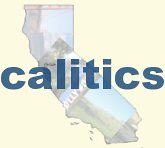Signing Statements
Marty Lederman directs us to the Presidential signing statement on the McCain Torture Amendment, which essentially nullifies it:
The executive branch shall construe Title X in Division A of the Act, relating to detainees, in a manner consistent with the constitutional authority of the President to supervise the unitary executive branch and as Commander in Chief and consistent with the constitutional limitations on the judicial power, which will assist in achieving the shared objective of the Congress and the President, evidenced in Title X, of protecting the American people from further terrorist attacks.
Basically, they're saying that "I'm going to read this Amendment as the law for now, but I reserve the right to change it whenever I want and you can't stop me."
Actually, if you read the entire signing statement, you'll see a multitude of legalese resulting in the President attempting to refashion numerous aspects of the law. This has a dangerously imperial bent, and until now I had no idea that the executive branch went to these lengths to rewrite legislation. I went and found a history of signing statements written by Assistant Attorney General Walter Dellinger in 1993. He makes a distinction between reasonable and, shall we say, extra-reasonable purposes of signing statements:
Many Presidents have used signing statements to make substantive legal, constitutional or administrative pronouncements on the bill being signed. Although the recent practice of issuing signing statements to create "legislative history" remains controversial, the other uses of Presidential signing statements generally serve legitimate and defensible purposes.
Creating "legislative history" means basically that the executive is making his argument to the courts in favor of his interpretation of the law, and expects the court to give that as much weight as the text of the law itself. This notion started in, you guessed it, the Reagan Administration:
In 1986, then-Attorney General Meese entered into an arrangement with the West Publishing Company to have Presidential signing statements published for the first time in the U.S. Code Congressional and Administrative News, the standard collection of legislative history. Mr. Meese explained the purpose of the project as follows:
To make sure that the President's own understanding of what's in a bill is the same . . . or is given consideration at the time of statutory construction later on by a court, we have now arranged with the West Publishing Company that the presidential statement on the signing of a bill will accompany the legislative history from Congress so that all can be available to the court for future construction of what that statute really means.
It seems to me that if you allow the President to make up his own interpretation of a statute, and then that becomes as much a part of the law as the actual text, you've effectively rendered Congress moot in the legislative process. Under this theory, the President could be given a bill to build a new highway and decide "To me, this bill means I should attack Yemen on Friday," and the two interpretations are completely equal parts of the law. This is no different than issuing a line-item veto, which has been determined unconstitutional since 1985. What we end up with, at worst, is a President speaking for Congress, and it's not at all surprising that our current King George gets off on this new expansion of executive power.






<< Home